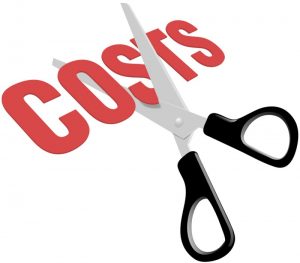 Demanding customers, fierce competition, breathtaking technological innovation, etc. These are the realities of today’s global marketplace; realities that have changed forever the way we do business, especially the way we sell.
Demanding customers, fierce competition, breathtaking technological innovation, etc. These are the realities of today’s global marketplace; realities that have changed forever the way we do business, especially the way we sell.
Gone are the days when salespeople could rely on charming small-talk and aggressive closing techniques alone to generate business.
Many traditional selling approaches regard selling as something the seller does to the buyer. They sell them something. The result of this attitude to sales is that many salespeople adapt a manipulative, almost coercive style of selling.

 The importance of consistency in business seems so basic as to not need discussion. Yet many companies, especially smaller ones, operate in a day-by-day, case-by-case fashion that is disorganised, undisciplined and certainly inefficient.
The importance of consistency in business seems so basic as to not need discussion. Yet many companies, especially smaller ones, operate in a day-by-day, case-by-case fashion that is disorganised, undisciplined and certainly inefficient. Packaging plays an important role as a medium in the marketing mix, in promotion campaigns, as a pricing criterion, in defining the character of new products, as a setter of trends and as an instrument to create brand identity and shelf impact in all product groups.
Packaging plays an important role as a medium in the marketing mix, in promotion campaigns, as a pricing criterion, in defining the character of new products, as a setter of trends and as an instrument to create brand identity and shelf impact in all product groups. Refunds are no fun. You get that email, or a call, or worse yet, a public shout out on social media that reads, “I’d like a refund.” Those four words can send any small business or solopreneur into a tailspin of self-doubt. But it doesn’t have to be this way.
Refunds are no fun. You get that email, or a call, or worse yet, a public shout out on social media that reads, “I’d like a refund.” Those four words can send any small business or solopreneur into a tailspin of self-doubt. But it doesn’t have to be this way. Nurturing relationships with your customers is a crucial part of growing a successful business. In this age of automation and innovation, caring for your customers has never been more important.
Nurturing relationships with your customers is a crucial part of growing a successful business. In this age of automation and innovation, caring for your customers has never been more important. So you want your website to make you look big. More power to you. But the business experts I talked to recently say small is cool with customers, too.
So you want your website to make you look big. More power to you. But the business experts I talked to recently say small is cool with customers, too. As a general concept, research is the process of gathering information to learn about something that is not fully known. Nearly everyone engages in some form of research.
As a general concept, research is the process of gathering information to learn about something that is not fully known. Nearly everyone engages in some form of research. Building a brand is about building a relationship with your customers. For this relationship to be long-lasting, it has to be based on something meaningful. That comes when a brand satisfies a real need, either better or in a different way to any other brand available.
Building a brand is about building a relationship with your customers. For this relationship to be long-lasting, it has to be based on something meaningful. That comes when a brand satisfies a real need, either better or in a different way to any other brand available. Operational margins are narrowing; leaving business owners constantly looking for ways to reduce business running costs and increase profits.
Operational margins are narrowing; leaving business owners constantly looking for ways to reduce business running costs and increase profits. Know the competition. Find out who your competitors are, what they are offering and what their unique selling point (USP) is. This will identify the areas you need to compete in, as well as giving you a platform for differentiating yourself.
Know the competition. Find out who your competitors are, what they are offering and what their unique selling point (USP) is. This will identify the areas you need to compete in, as well as giving you a platform for differentiating yourself. Good customer service goes a long way in business; a happy customer is a customer who will recommend you to other shoppers, a returning customer,…. But so many companies just can’t get this right. They’re either putting their needs ahead of their customers’ or too wrapped up in finding new customers that existing ones become expendable.
Good customer service goes a long way in business; a happy customer is a customer who will recommend you to other shoppers, a returning customer,…. But so many companies just can’t get this right. They’re either putting their needs ahead of their customers’ or too wrapped up in finding new customers that existing ones become expendable. Do you know if your customers are happy? If not, you should.
Do you know if your customers are happy? If not, you should.